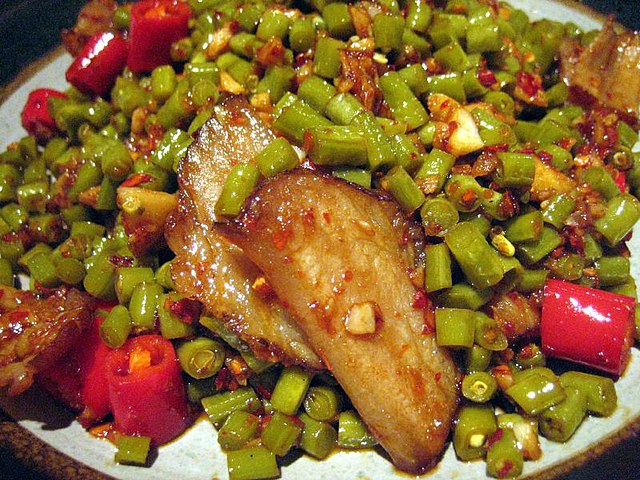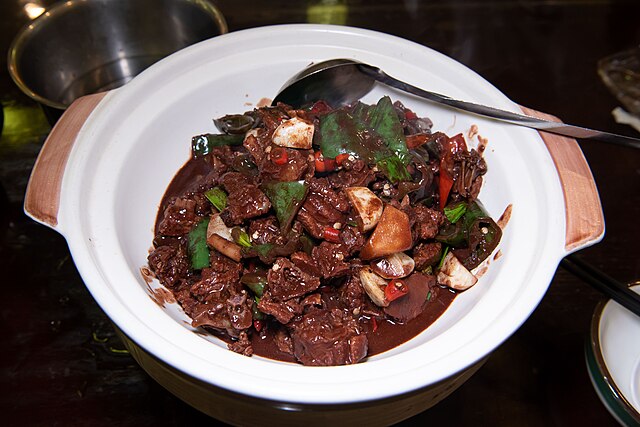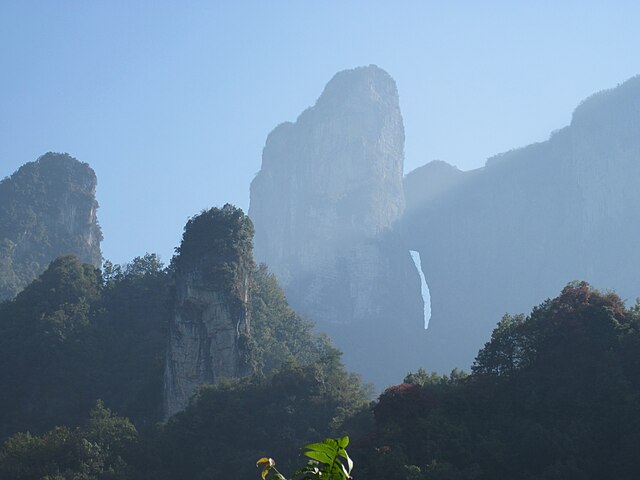Hunan cuisine, also known as Xiang cuisine, consists of the cuisines of the Xiang River region, Dongting Lake and western Hunan Province in China. It is one of the Eight Great Traditions of Chinese cuisine and is well known for its hot and spicy flavours, fresh aroma and deep colours. Despite this, only about 20% of the cuisine uses capsicum to produce a strong spicy taste. Common cooking techniques include stewing, frying, pot-roasting, braising and smoking. Due to the high agricultural output of the region, ingredients for Hunan dishes are many and varied.
Hunan cured ham with pickled yardlong beans
A bowl of Changsha rice noodles
Sautéed pork with chili pepper
Xueya, sautéed duck with duck blood, originated from Yongzhou
Hunan is an inland province of China. Located in the middle reaches of the Yangtze watershed, it borders the province-level divisions of Hubei to the north, Jiangxi to the east, Guangdong and Guangxi to the south, Guizhou to the west, and Chongqing to the northwest. Its capital and largest city is Changsha, which abuts the Xiang River. Hengyang, Zhuzhou, and Yueyang are among its most populous urban cities. With a population of just over 66 million as of 2020 residing in an area of approximately 210,000 km2 (81,000 sq mi), it is China's 7th most populous province, the fourth most populous among landlocked provinces, the second most populous in South Central China after Guangdong and the most populous province in Central China. It is the largest province in South-Central China, the fourth largest among landlocked provinces, and the 10th most extensive province by area.
Image: 1 zhangjiajie huangshizhai wulingyuan panorama 2012
Image: Yuelu Academy Gate
Image: 凤凰沱江 panoramio (10)
Image: Tian Menshan Mountain 10








